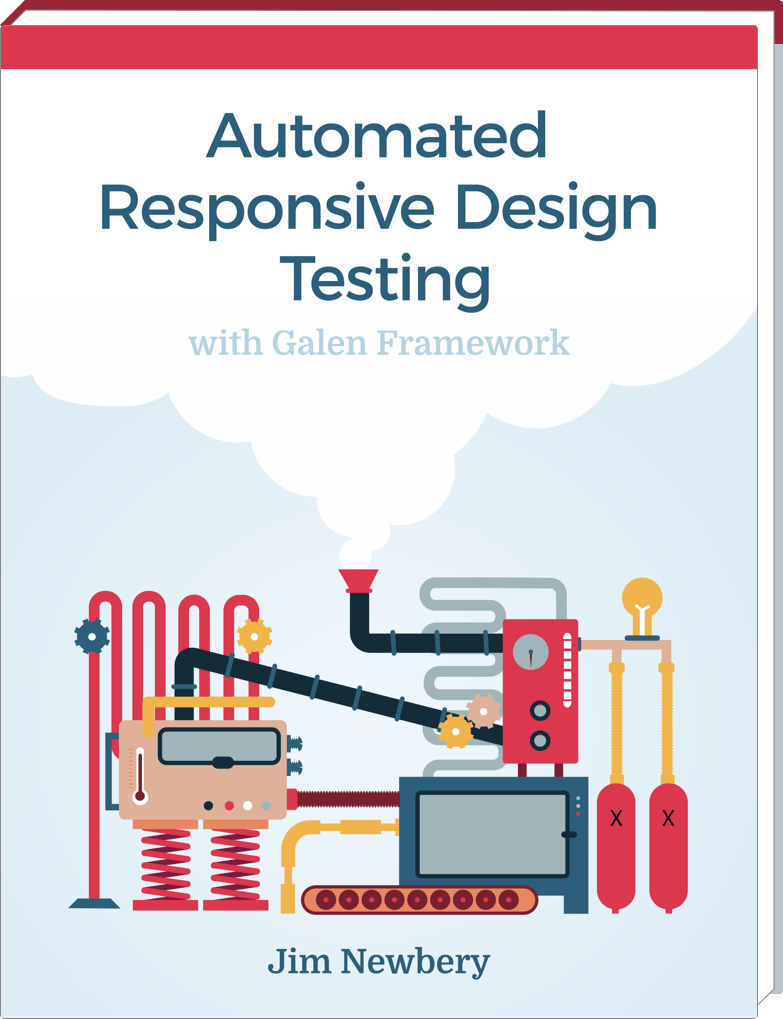No more repetitive manual cross-browser testing
Do you want to get on with other stuff instead?

Testing your websites across all the popular browsers and devices is tedious, slow and often expensive. There are 100 more useful things that you could be doing.
But testing is important.
Manual testing is getter harder
- You are committed to high quality web designs that work across all the major browsers
- You use the latest responsive design techniques to provide a great experience for users of different devices
- You wish there was a better way to test that your designs work on popular devices and browsers
How often have you manually tested your design only to find that your approach simply doesn't work on one of the major browsers?
Sometimes this means having to change tack completely, or putting browser-specific hacks in place to work around the problem.
Manually testing on a wide range of devices and browsers takes a lot of time, expense and anguish.
Wouldn't it be great to delegate away most of this tedium and overhead so you can focus on those 100 other more important things?
Automate!
With some upfront time investment, automating your cross-browser layout testing can pay off handsomely over the course of a project.
There are now tools that can test your layouts in a wide range of browsers and devices for you.
Automated testing tools can:
- be set up to run tests on demand, or automatically when code changes
- test responsive designs, so that you can set different expectations at different screen dimensions
- run all these tests in the cloud so you don't need to run your own expensive device laboratory
Benefits
By automating such a big chunk of work, you may see some of these benefits:
- Save many, many hours over the course of your project
- Reduce the amount of time you spend maintaining test browsers and devices
- Colleagues, clients or managers will think you are a magician
- You and your team will be more motivated to fix bugs
- Your design process can change for the better, by embracing testing earlier
- Take an incremental approach to quality
This visual step-by-step guide will help you to set up an automated testing system, write your own test specs, and start changing how you work for the better.
What’s inside
- an in-depth, step-by-step guide to testing your designs across multiple web browsers at multiple screen sizes automatically, using Galen Framework
- how automating your cross-browser testing can save you time and grief
- discover different types of design testing and work out which are best for your projects
- a comparative evaluation of available testing tools
- find out how to set up your projects so they are testable
- how to run your test suite in the cloud on browser testing tools like Sauce Labs or BrowserStack
- learn how to test complex responsive layouts and interactive components
- a guide to running your tests automatically whenever anyone on the team commits code, or every night
- advice on how to manage large projects with large test suites

Jim not only guides you step-by-step through getting started with automated testing, but perfectly outlines why it’s so valuable, and how to use it responsibly.

Testing is the foundation of maintainable code but with responsive websites the number of permutations can make testing seem impractical.
“In Automated Responsive Design Testing you’ll find pragmatic advice that will allow you to build and grow websites with confidence.

Automated Responsive Design Testing is an extremely clear, well-written book both for those with no experience of testing and for veterans on the subject.
“It helped me convince my team of the benefits of integrating testing into our workflow and we've not looked back since.
Get your copy now

- 172 pages of practical advice and step-by-step instructions
- 30 days money back guarantee
- Free source code and working example project to get started with straight away
About the author

My name is Jim Newbery. I'm a front-end engineering consultant from Edinburgh in sunny Scotland.
I've been creating websites and web applications for twenty years, and in that time I've learned a lot from countless colleagues and friends. I like to give back by helping others learn from my experience.
You can follow me on Twitter @froots101 or read my blog.
Full table of contents
Part I: Design testing
- Why automate design testing?
- Types of design test
- Which tools to use
- Testing in the cloud
- Continuous integration
Part II: Step-by-step guide
- What you'll need
- A simple search component
- Our first test spec
- Expanding the spec
- Running a suite of specs
- Visual regression testing
- Running specs in different browsers
- Testing responsive designs
- Testing a page layout
- Using variables for common values
- JavaScript enhancement
- Adding user interactions
- Running tests in the cloud
- Setting up continuous integration
- CI with headless browsers
- CI with cloud testing services
- Saving test reports
- Keeping tests fast